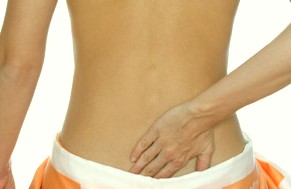Pregnancy can be a time of joy as well as a period riddled with varied pains and aches. One such abnormality is tailbone pain during pregnancy. It is most common in the 2nd and 3rd trimesters. It may however be noted that despite the severe discomfort associated with tailbone pain during pregnancy, the condition is quite harmless and generally tends to disappear on its own within 2 months after childbirth.
What and where is the tailbone?
Medically known as the ‘coccyx,’ the tailbone is a triangular-shaped bony structure present at the tip of the sacrum. It is referred to as the tailbone because it occurs in the same region where the tail is present in animals. It is made up of 3 to 5 segments that attach to the spine via joints and ligaments. The coccyx may elicit a certain range of motion, which may differ between individuals.
During pregnancy, a hormone known as ‘relaxin’ is produced by the body to help relax the different ligaments and muscles in the pelvic area, and thus prepare for delivery. The hormone also causes loosening of the ligaments that connect the spine and the coccyx. A flexible tailbone may be helpful for easier labor, but when it shifts around ‘much’ before delivery, then it can result in pain, especially if the unborn child’s head is pressing against it.
Women with underlying or older cases of tailbone problems should consult a doctor before trying to become pregnant. This is primarily because after pregnancy, most tests and procedures involving the tailbone cannot be performed as it can injure the developing baby in the womb. It is also important for pregnant women to inform all concerned persons, including doctors, about the presence of tailbone pain during pregnancy, as and when it arises.

Symptoms of tailbone pain during pregnancy
The signs and symptoms of tailbone pain during pregnancy tend to vary from person to person, in both intensity and frequency. Some common symptoms are listed below:
- Patients may often experience a sharp pain in the area of the coccyx when sitting. This feeling may be similar to like sitting on a hard round object, or in acute instances, on a sharp tapering object.
- Women with tailbone pain during pregnancy may also elicit extremely sharp tailbone pain while getting up after being seated, or may experience radiating pains down the lower limbs.
- Some affected women may not experience acute pain. Instead, they may elicit a deep ache near the tailbone area.
Tailbone pain during pregnancy mainly arises due to rubbing of the coccyx down the lower back because of the baby forcing pressure on it. The tailbone may possibly get injured during childbirth when the baby travels down the birth canal. Such an injury can be a chip, a bruise, or in rare cases, a tailbone fracture.
Prevention and alleviation of tailbone pain during pregnancy
Some of the do’s and don’ts to prevent and ease tailbone pain during pregnancy are listed below.
The Do’s
- Without adding pressure to the back, relax and put the feet on an ottoman. Opt for this posture when alternating positions, to get relief.
- When sitting, try using wedge-shaped or donut-shaped cushions to give support to the back and also decrease the pressure on the tailbone.
- Constipation, a common pregnancy problem, can exert serious pressure on the tailbone. Hence, relieve the bowels on a daily basis.
- Avoid the use of medications to alleviate tailbone pain during pregnancy. You may instead go for indulgent soothing baths, varied relaxation methods, or application of cold compresses to the affected region.
- To feel better, go for walks over short distances. This will also help promote better bowel movements thereby lowering the cases of constipation.
- You can also find relief from tailbone pain during pregnancy by getting a relaxing massage concentrated in the coccyx area. Massages may not work for everyone. Hence, stop it immediately if it hurts or causes discomfort.
- In some cases, tailbone pain and discomfort can be eased by sitting at the time of birth. You may also sit on an exercise ball during delivery.
- You may change the position of the baby to decrease the overall pressure on the tailbone by performing the pelvic tilt. Even though, in most cases, the general position of the unborn child is not the cause of tailbone pain during pregnancy, shifting its posture can help decrease stress exerted on the region.
The Don’ts
- Do not sit on hard surfaces. Also, avoid sitting for prolonged periods at one go as affected women may experience sharp pain when getting up after being seated for long periods.
- Do not take any medicines to find relief from the pain as it may harm the baby. If you really need medical relief for tailbone pain during pregnancy, then consult a doctor.
- Rise slowly after being seated. Never get up immediately with a jerk.
- Do not stand for long hours. You may alternate between standing and being seated.
- Avoid sleeping on the back. Sleeping on either side, especially the left side, is recommended.